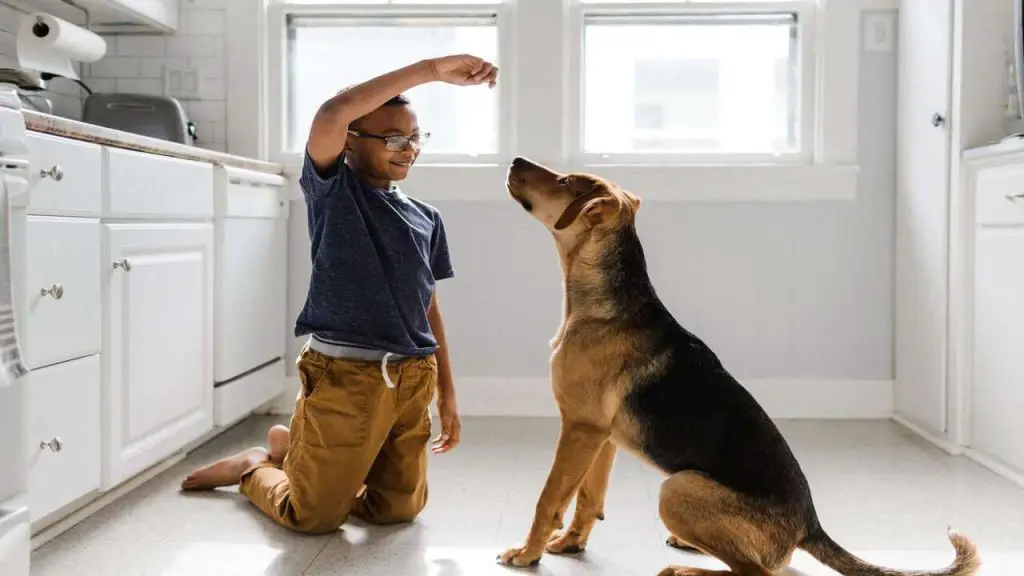Are you a first-time dog owner or struggling with training your furry friend? Training a dog can be a challenging but rewarding experience. It takes patience, consistency, and understanding to teach your dog new tricks and good behavior.
Dogs are intelligent creatures that thrive on structure and routine. Training not only strengthens the bond between you and your dog but also helps prevent behavioral issues that could lead to problems in the future. However, with so many training methods and techniques available, it can be overwhelming to know where to start.
If you want a well-behaved dog that listens to your commands, you need to start training as soon as possible. In this article, we will explore the best practices for training your dog, including positive reinforcement, consistency, and patience.
Whether you’re dealing with a new puppy or an older dog, these tips will help you establish a strong foundation for a happy and healthy relationship with your furry friend.
Basics Of Training A Dog
Training a dog is essential for both the dog and the owner. It helps to establish a healthy relationship between the two and ensures that the dog behaves appropriately in different situations.
The basics of training a dog involve teaching them basic commands such as sit, stay, come, and heel. Positive reinforcement is the most effective way to train a dog, and treats, praise, and affection are great motivators.
Consistency and patience are key when training a dog, and it’s important to remember that every dog learns at their own pace. With the right approach and techniques, any dog can be trained to be well-behaved and obedient.
Tips To Train A Dog

Start Early
Training your dog should begin as early as possible. Puppies are more receptive to training and learn faster than adult dogs. Training your dog early will help them develop good habits and prevent bad ones.
Use Positive Reinforcement
Positive reinforcement is the most effective method of training a dog. It involves rewarding your dog for good behavior with treats, praise, and toys.
This method creates a positive association between good behavior and rewards, making your dog more likely to repeat the behavior.
Be Consistent
Consistency is key when training your dog. Dogs thrive on routine and predictability, so it’s important to establish a consistent training schedule and stick to it. Use the same commands and rewards every time you train your dog.
Keep Training Sessions Short
Dogs have short attention spans, so it’s important to keep training sessions short and focused. Aim for 10-15 minute sessions, several times a day. This will prevent your dog from becoming bored or overwhelmed.
Use a Clicker
Clicker training is a popular method that uses a small, handheld device that makes a clicking sound. The sound is used to mark good behavior and is often followed by a reward.
Clicker training is a great way to communicate with your dog and reinforce good behavior.
Start with Basic Commands
Start with basic commands like “sit,” “stay,” and “come.” These commands are easy to teach and will form the foundation for more advanced training.
Once your dog has mastered these commands, you can move on to more complex ones.
Be Patient and Persistent
Training a dog takes time and patience. Don’t expect your dog to learn everything overnight.
Be persistent and consistent in your training, and reward your dog for progress, even if it’s small. With time and practice, your dog will learn and become a well-behaved companion.
Benefits Of Training A Dog
Better behavior
Training a dog helps them learn good behavior, such as following commands, socializing with other dogs, and interacting with humans.
This helps to prevent unwanted behavior, such as excessive barking, jumping, and digging.
Bonding
Training a dog is a great way to bond with them. It helps to build trust and strengthen the bond between the dog and the owner. This can lead to a stronger and more fulfilling relationship.
Mental stimulation
Training provides mental stimulation for dogs, which is important for their overall well-being.
It helps to keep their minds active and engaged, preventing boredom and reducing the risk of destructive behavior.
Exercise
Training often involves physical activity, such as walking, running, and playing. This provides dogs with much-needed exercise, which is important for their physical health and helps to prevent obesity.
Safety
Training a dog can help to ensure their safety. Teaching them basic commands, such as “come” and “stay,” can prevent them from running into dangerous situations, such as traffic.
Socialization
Training a dog provides opportunities for socialization, which is important for their social development.
It allows them to interact with other dogs and people, helping to prevent aggression and fearfulness.
Fun
Training can be a fun activity for dogs and their owners. It provides a fun way to spend time together and can be a rewarding experience for both parties.
Conclusion
In conclusion, training a dog requires patience, consistency, and positive reinforcement. It is important to establish clear rules and boundaries for your dog and to reward good behavior.
Training should be a fun and interactive experience for both you and your furry friend. By investing the time and effort into properly training your dog, you can strengthen your bond and create a happy and well-behaved companion.
Remember to always approach training with love and understanding, and your dog will be sure to thrive.
FAQ’s
What Is The First Trick I Should Teach My Dog?
The first trick you should teach your dog can vary depending on your personal preferences and your dog’s abilities. However, a good starting point is teaching your dog basic obedience commands such as “sit,” “stay,” and “come.”
These commands provide a foundation for more advanced tricks and also help with everyday situations such as walking on a leash and greeting visitors.
It’s important to remember that all dogs learn at their own pace and with consistent positive reinforcement, any trick can be mastered.
Should I Hire A Professional To Train My Dog?
Hiring a professional to train your dog can be a great investment in both your dog’s behavior and your own peace of mind.
A professional dog trainer has the knowledge and experience to identify the root causes of your dog’s problem behaviors and create a personalized training plan to address them. They can also teach you effective techniques for reinforcing good behavior and managing challenging situations.
While you can certainly train your dog on your own, a professional trainer can often achieve faster and more lasting results, saving you time and frustration in the long run. Ultimately, the decision to hire a professional trainer depends on your own comfort level and goals for your dog’s behavior.
Are Dogs Easy To Train?
The answer to whether dogs are easy to train is not a simple one. It depends on the breed, age, and temperament of the dog, as well as the experience and training methods of the owner.
Some breeds, like Border Collies and German Shepherds, are known for their trainability and intelligence. However, even within these breeds, individual dogs may vary in their ability to learn and follow commands.
Additionally, puppies are generally easier to train than older dogs, but it still requires patience, consistency, and positive reinforcement. Overall, with the right approach and dedication, most dogs can be trained to some degree.



